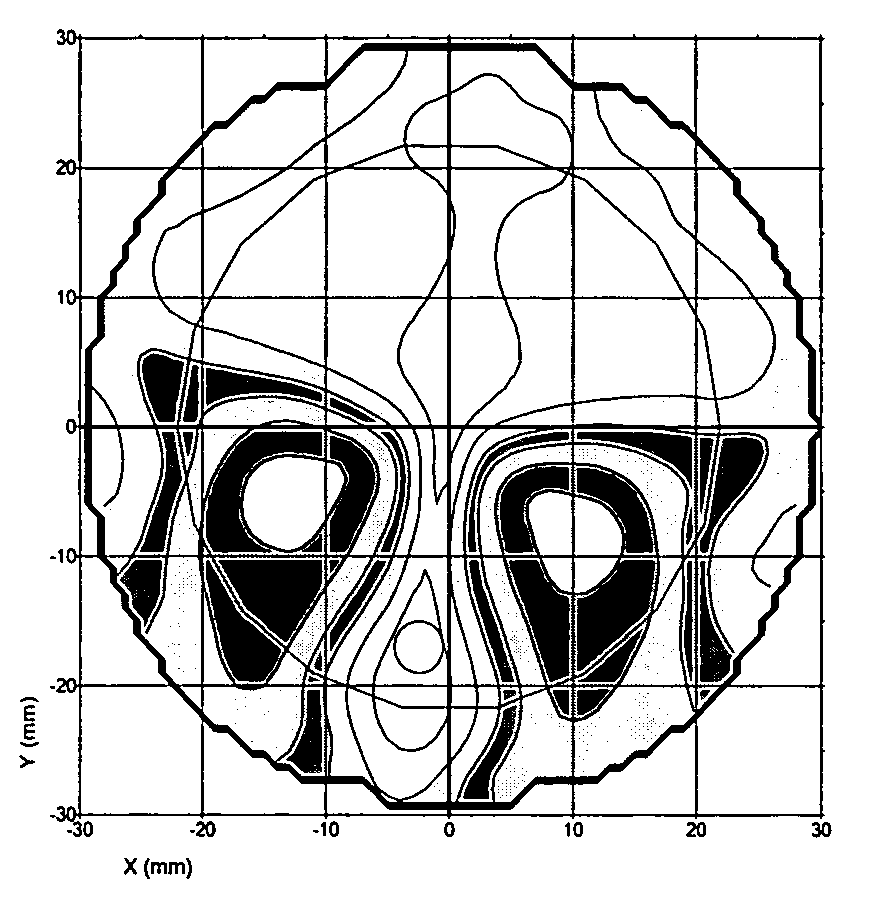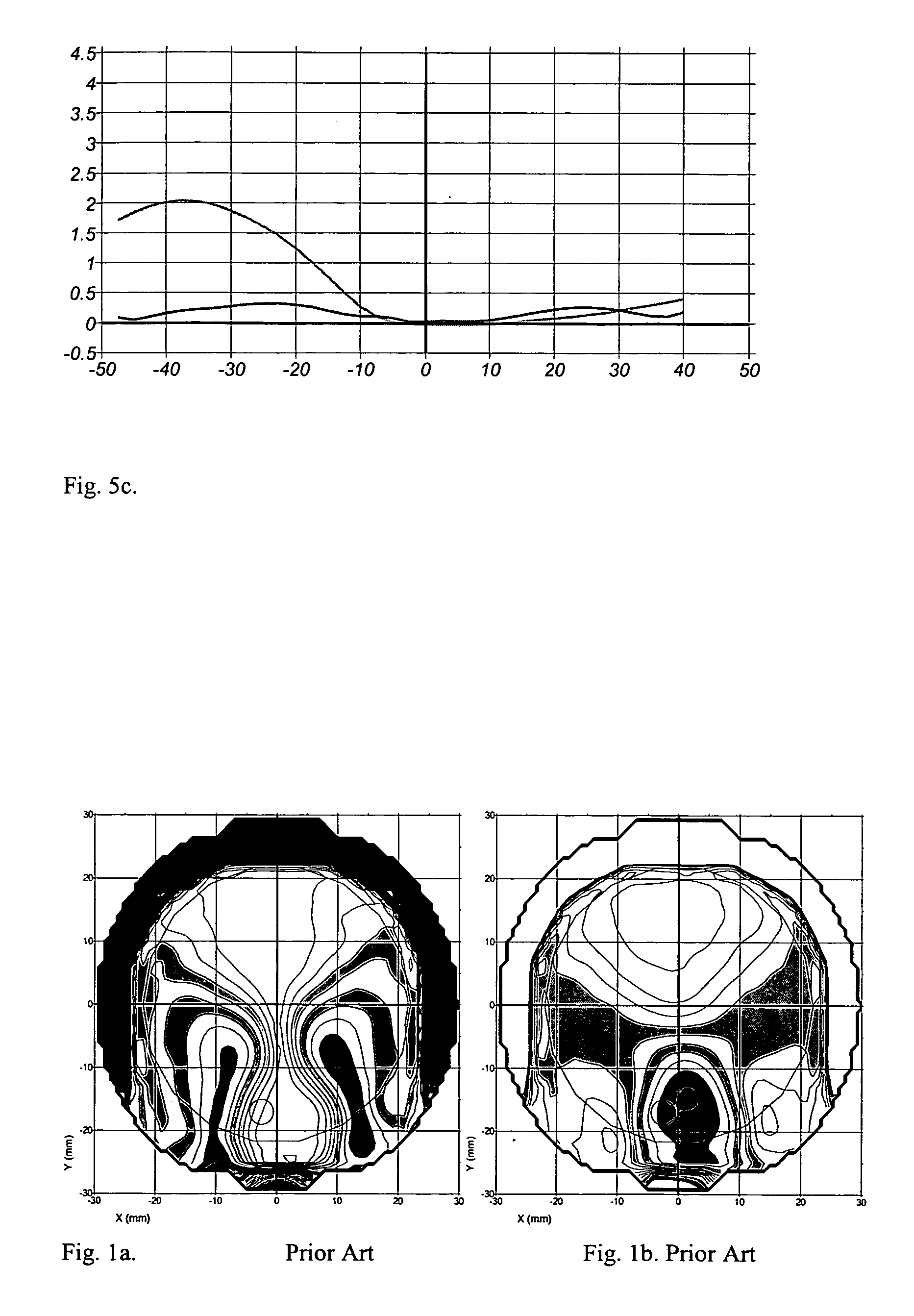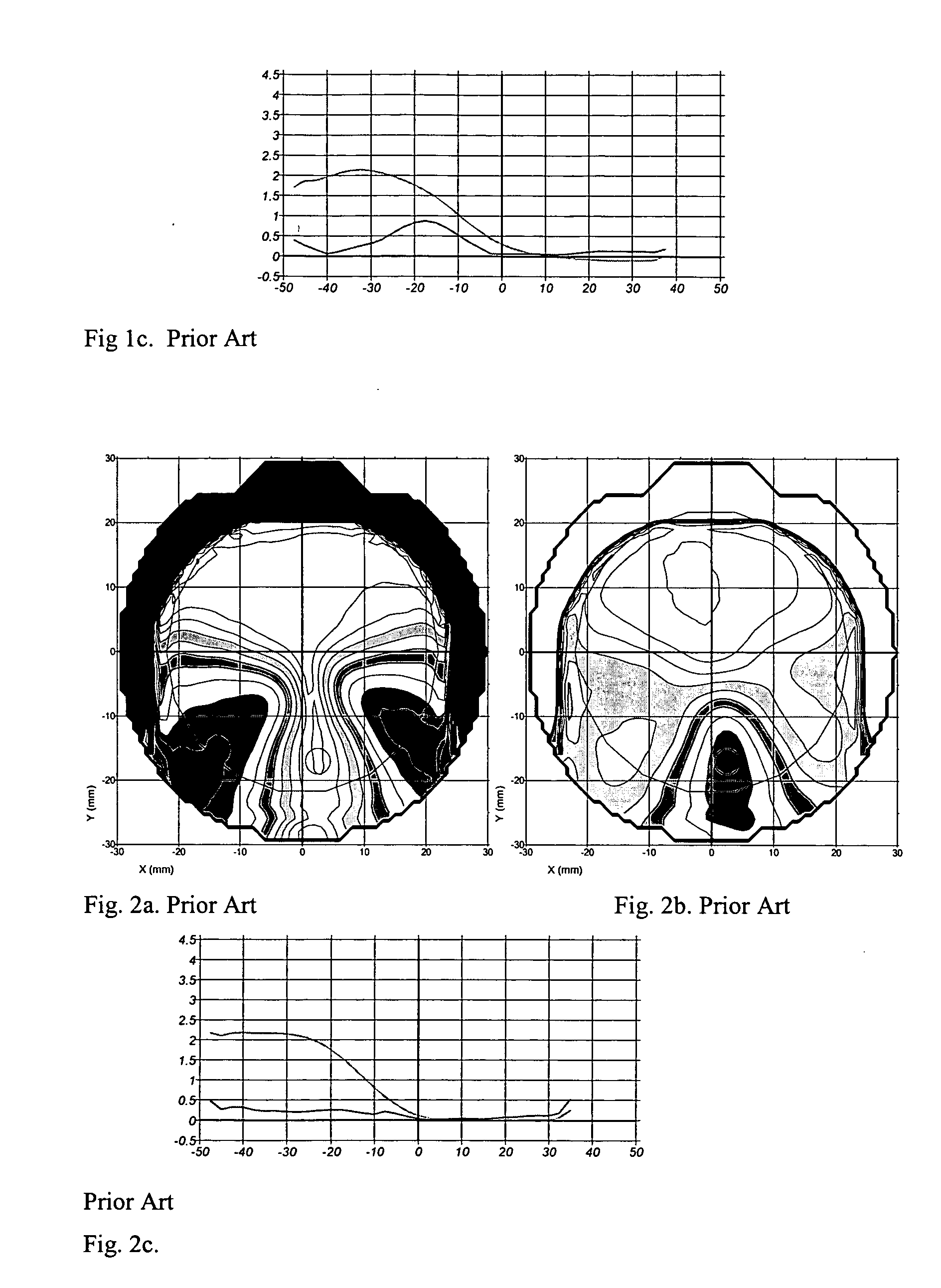Short corridor progressive addition lenses with reduced unwanted astigmatism
a technology of progressive addition and short corridor, applied in optics, medical science, instruments, etc., can solve the problems of affecting the wearer's vision, and affecting the wearer's vision, and reducing the level of unwanted astigmatism
- Summary
- Abstract
- Description
- Claims
- Application Information
AI Technical Summary
Problems solved by technology
Method used
Image
Examples
example 1
[0057] A first progressive surface was designed using a material with a refractive index of 1.515. The lens' base curve was 104.3 mm and the add power was 2.04 diopters. This surface had a standard length corridor of 12.3 mm and maximum unwanted astigmatism is 1.56 diopters. The corridor factor Cf was 9.40 mm. The surface U was scaled with the following scaling factor: u(x,y)=1.019*U(x,y).
[0058] A second progressive surface having the same refractive index, base curve, add power, corridor length, corridor factor and maximum unwanted astigmatism as the first surface was also designed. The second surface was scaled to a lower add power with the following scaling factor v(x,y)=1.045*U(x,y) according to the design methodology of the invention.
[0059] The first and second surfaces were added using the blending function F of Equation. III with a=−0.001466 and b=0.018. The addition and blending result in the following equation for the resulting progressive surface w(x,y): w(x,y)=1.019*...
example 2
[0061] The surface (W) of Example 2 was shifted vertically so that the fitting point was located at y=+2 mm. The optical data for the resulting progressive surface (W) is shown in Table 1. The power and cylinder contour plots are shown in FIGS. 5a and 5b and the power and cylinder profile along the corridor in FIG. 5c. This resulted in the lengthening of the corridor by 2 mm to 12.4 mm which is similar to a conventional standard corridor length progressive design. The maximum unwanted astigmatism increases by only 0.05 diopters to 1.63 diopters. The corridor factor, Cf was 9.96 mm. The fitting point was marked at y=+2 mm.
TABLEOpticalLensLensLensSurface ASurface WExampleParameter123Example 1Example 12Add Power2.042.152.042.042.012.03(D)Distance7.918.313.525.26.323.4Width (mm)Reading18.311.216.216.014.115.8Width(mm)Reading13.89.58.09.27.48.2PowerWidth(mm)Corridor11.610.512.312.310.412.4Length(mm)Corridor6.65.48.68.47.06.6Width(mm)Max.2.642.361.531.561.581.63Astig.(D)Cf (mm)15.011.59...
PUM
 Login to View More
Login to View More Abstract
Description
Claims
Application Information
 Login to View More
Login to View More - R&D
- Intellectual Property
- Life Sciences
- Materials
- Tech Scout
- Unparalleled Data Quality
- Higher Quality Content
- 60% Fewer Hallucinations
Browse by: Latest US Patents, China's latest patents, Technical Efficacy Thesaurus, Application Domain, Technology Topic, Popular Technical Reports.
© 2025 PatSnap. All rights reserved.Legal|Privacy policy|Modern Slavery Act Transparency Statement|Sitemap|About US| Contact US: help@patsnap.com



